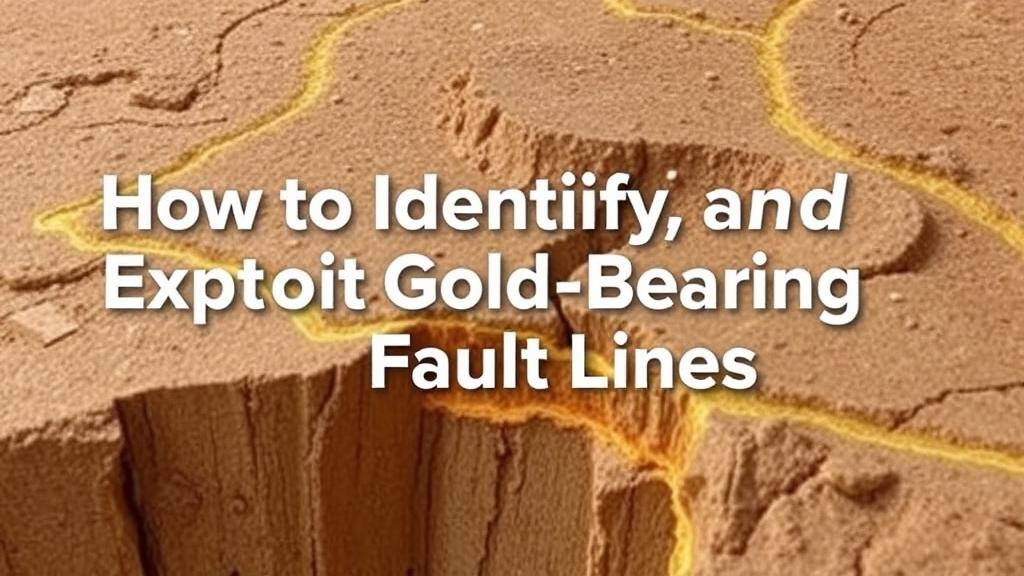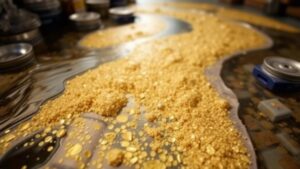How to Identify and Exploit Gold-Bearing Fault Lines
How to Identify and Exploit Gold-Bearing Fault Lines
Gold exploration and mining have been vital to economic development worldwide. One of the most significant methods of discovering gold is through identifying and exploiting gold-bearing fault lines. This article aims to provide a comprehensive yet accessible overview of how these geological features are located and utilized in gold mining.
Understanding Fault Lines
Fault lines are fractures in the Earths crust where blocks of rock have moved relative to each other. are essential in geology as they can lead to the concentration of mineral deposits, including gold. Understanding the characteristics of fault lines is crucial for identifying areas rich in gold.
Formation of Gold-Bearing Fault Lines
Gold-bearing fault lines are formed through geological processes that involve the movement of tectonic plates. During this movement, minerals, including gold, can be introduced into the fault zones via hydrothermal fluids. Some key factors contributing to this process include:
- High temperatures and pressures that facilitate mineral deposition.
- Fluid activity that allows for the migration of gold particles into fractures.
- Reactive host rocks that enable the formation of ore deposits.
Identifying Gold-Bearing Fault Lines
Identifying gold-bearing fault lines requires a combination of fieldwork, geological mapping, and technology. Here are some effective strategies for identifying these fault lines:
- Geological Surveys: Conduct comprehensive geological surveys that include mapping rock types and structural features.
- Remote Sensing: Use satellite imagery and aerial photography to spot anomalies in the landscape that may indicate fault lines.
- Geochemical Analysis: Analyze soil and rock samples for gold and other trace elements, using data to pinpoint areas of interest.
- Geophysical Methods: Use methods such as seismic reflection, resistivity measurements, and magnetic surveys to detect subsurface structures.
Case Study: The Kalgoorlie Goldfield
The Kalgoorlie Goldfield in Western Australia exemplifies the successful identification and exploitation of gold-bearing fault lines. The geological setting of Kalgoorlie is characterized by a series of faults and shear zones that host significant deposits. Through extensive geological mapping and geophysical studies, mining companies identified these structural features, ultimately leading to the discovery of the renowned Super Pit.
Exploitation of Gold-Bearing Fault Lines
Once gold-bearing fault lines are identified, the next step is their exploitation. This process includes several techniques:
- Open-Pit Mining: Used when gold deposits are located close to the surface. It enables the extraction of large volumes of ore efficiently.
- Underground Mining: Employed when deposits are deeper, it involves creating tunnels to access the ore, reducing surface disturbance.
- Heap Leaching: A cost-effective method used to extract gold from low-grade ores by piling ore and applying chemical solutions to leach out gold.
Environmental Considerations
While exploiting gold-bearing fault lines can yield significant economic benefits, it also raises environmental concerns. Sustainable mining practices must be implemented to mitigate negative impacts, including:
- Minimizing habitat destruction through careful planning of mining activities.
- Controlling water pollution by treating wastewater generated during mining operations.
- Rehabilitating mined areas to restore ecosystems post-mining.
Conclusion
Identifying and exploiting gold-bearing fault lines is a complex process that requires a multi-faceted approach involving geology, technology, and responsible environmental practices. By utilizing modern exploration techniques, mining companies can successfully locate these deposits, contributing to the global economy while also addressing ecological concerns.
Actionable Takeaway: For prospectors and mining companies, combining traditional geological methods with advanced technologies can enhance the effectiveness of gold exploration. Continuous education on sustainable mining practices can further ensure the longevity of gold resources and the health of the environment.


